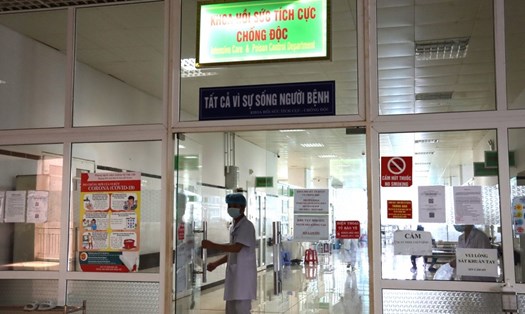Identify mushrooms correctly to avoid danger
Spring with warm weather and high humidity is a favorable condition for fungi to grow, and is also the time for increased mushroom poisoning cases. Although the number of mushroom poisoning cases is not much compared to other types of food poisoning, the mortality rate is very high.
According to information from the Food Safety Department (Ministry of Health), the world has identified more than 10,000 species of fungi, including hundreds of types of toxic fungi. Notably, most mushrooms with hats, phien, quy, rings and trunk bags are mushroom poison. Toxins in mushrooms can change seasonally, during growth and in the host environment. There are cases of the same type of mushroom, but sometimes eating it is not good, sometimes causing poisoning.
Some mushroom species have similar shapes and colors, making it difficult to distinguish, even for experts. Determining toxin often requires under-amiccopic research, based on the characteristics of fungal spores. Therefore, it is best not to pick wild mushrooms to eat to avoid the risk of poisoning.
The Food Safety Department also shows signs of identifying toxic fungi:
Forms: Mushrooms with all parts such as hats, phien, quy, quy vong and the trunk is usually a poison mushroom.
Color: Mushrooms with light pink stems, red hats with white scales or mushroom fibers that glow at night are usually toxic mushrooms.
Widespread distribution of toxins: All mushroom bodies (hats, phien, rings, trunks, trunks) contain toxins, which can change seasonally, in the soil environment and climate.
Misconceptions about mushrooms
The Food Safety Department gives misconceptions about mushrooms: Toxic mushrooms are often colorful and colorful. In fact, there are extremely toxic mushrooms such as white canopy mushrooms with a milk-white appearance, so many people are easily confused with the types of mushrooms that can be eaten. Therefore, to distinguish white-escaped mushrooms from eaten white mushrooms is not simple even for medical staff as well as experienced people.
Mushrooms eaten by insects are not toxic. In fact, the poison fungi are eaten by termites, insects, and snails.
Try feeding the animal (chicken, dog, rat, ...) first if after 1-2 hours the animal does not die or is not poisoned, which is non-poisoning mushroom. This is only true for some fast-acting fungal species. For deadly fungal species, they are often slow to function (12 - 24 hours before having the first symptoms), so they cannot be recognized immediately and the animals only die after eating fungus 4-5 days.
Try mushrooms with chopsticks, spoons, IV lines, etc. made from silver if you see them changing to gray black, it will be mushroom poison. This is completely wrong. The toxins in mushrooms are not effective for silver, so they do not cause discoloration.










